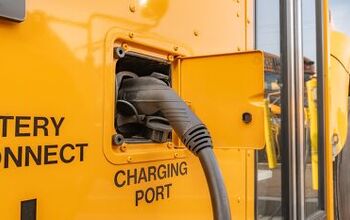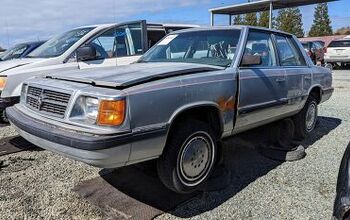Hammer Time: Fashion or Function?
20 years. When most folks ask me how long the average car should last, that’s what I tell them. It’s actually not true though. The real answer these days is a lifetime. In fact, I’ve seen cars at the auctions that were literally passed on from one generation to the next. They hit all sides of the American, Japanese, and European palette. Older Volvo 240’s and Toyota Camry’s are truly numerous. But Subaru SVX’s, Suzuki Samurai’s and even old-school Buick Roadmasters have been there in the automotive flesh as well. In fact, I’ve even seen some of the most unreliable vehicles in recent history (Excels, Chevettes, Kadetts) crawl through the 20+ year old finish line in good running order. What makes the real difference? Read on.
It starts with ‘ownership’ quality. I like to say that the fellow who drives the car is effectively the pitcher for a baseball team. The car may be the automotive version of a dynasty. But if the owner hurls cheap parts at it and literally abuses the machine on the road, it will fall apart no matter what. Most long-term owners do certain things that the owners manual will wryly fail to mention. Hoses, fluids and filters for example. Virtually all owner’s manuals will neglect the fact that hoses will wear out due to heat and age. $2000 engines can be blown from a $10 burst radiator hose while a worn $2 vacuum hose can lead to failed emissions and piss-poor performance and fuel economy. I time them with the elections and change all my hoses every four years.
In my world, fuel filters are changed every 30k miles, along with the transmission fluid. If it’s a supposed ‘lifetime’ fluid I do it every 50k. Many automakers interpret a ‘lifetime’ differently than you or me.
Case in point. A 2004 Nissan Maxima and 2004 Volvo S60 have the exact same transmission. The former recommends their fluid to be changed every 60k under Premium use, the later…. never. Who’s right?
Go to the enthusiast sites and you’re very likely to see a heaping load of $3000+ transmission issues for the Volvo tranny with the ‘lifetime’ fluid and nary a peep for the Maxima. Cars can truly last for decades. Fluids? Nyet.
GM learned this the hard way with their billion dollar Dexron debacle. Unchanged fluids effectively reduce the car’s ‘immunity’ to expensive repair issues as the additives and viscosity wear out. Smooth shifts become jerkish and transmissions, in this particular case, will gradually lose their heavy metals as a result. I always encourage changing the transmission fluid, replacing the coolant every two years, and take care of the brake and power steering fluid every four years. The $50 in fluid cost for all four of these will offset the potential of several thousands in repairs. It will also make your car run showrom new instead of beater old for as long as you want to drive it.
Struts and shocks? Depends on the roads and the quality you buy. I change mine every 100k, but Georgia has far smoother roads than places like Ohio or Alaska. If the ride bothers you, change them. It’s as simple as that.
Oil? Conventional for most of us… and 5,000 miles is the new 3,000 miles. Radiator? I change mine every eight years. Brakes can be changed when they squeak or when the brake light is on.
And here’s a surprise for some. You can change your seats and pretty much anything in your interior. I’ve bought beautiful $100 leather seats by simply going to car-part.com and ordering a set for a fraction of the cost on Ebay or the dealer. Being a part of an enthusiast’s community for your model (they all have one) will also give you access to information that some dealers and repair shops would prefer you not know. Use them whenever the hankering for information comes your way.
Finally, I’ve already published a series on buying a used car. But in terms of driving a used car, it’s the slow start turtles that will always outlast the jump start hares. Keep the revs below 2500 rpm until the car warms up and the motor oil can fully get into the system. Most engine wear will usually take place on start-up and the first five minutes of driving.
If your car is simply a commuter, treat it like a Boulevard cruiser. Coast, glide, use the brakes gradually, and anticipate traffic flow and adjust accordingly. Not only will you maximize fuel economy and your car’s longevity, you’ll also save money and screw all those modern day dictatorships and dealerships that frankly only care about your spending habits.
More by Steven Lang
Latest Car Reviews
Read moreLatest Product Reviews
Read moreRecent Comments
- ToolGuy Did anyone catch that Boeing Starliner launch earlier tonight?
- Lou_BC This is less harmful to one's re-election chances than harder driver's licence exams and making people re-test.
- 28-Cars-Later Probably should investigate the buyers too, maybe a basic psych eval?
- 28-Cars-Later "Despite nobody really digging the moniker, Honda has told Autocar that it only plans on changing the name of the model in China (as part of a more comprehensive facelift) because that’s where they’re having the most trouble and anticipated the largest sales volumes.""Customers in China just can’t pronounce it,” explained the source."So the Chinese are class A customers but frack the rest of y'all we don't care what you think or can understand?
- ToolGuy Is a Tesla store the same as a Tesla gallery? 16955 Chesterfield Airport Road is a gallery. 5711 S Lindbergh Blvd is a store. I wonder if anyone knows how far away those two locations are from each other. I wonder if Tesla's website shows vehicles in inventory. I wonder if there is a distance dropdown. So many questions.


































Comments
Join the conversation
No one is stating the obvious... buy a manual transmission car if you plan on keeping one that long. Your clutch will usually last longer than an automatic and it is usually a fraction of the cost to replace. And it can almost always be replaced the same day. Sure, there aren't very many manuals these days, but if you plan on keeping an automatic longer than 150K (even a Honda) you had better either change the trans fluid every 25-30K miles or plan on replacing the trans between 150-200K. Period. To the dude with the Taurus, check back with us at 200K and then we'll talk. I bet that trannie has been replaced/rebuilt by then. And "shifts good as new"? I bet not. It has changed slowly so you haven't noticed, but go find a low mileage one at a dealer and test drive it. You will see a difference.
Another excellent article. The "Buying a Used Car" is another favorite. My in-laws are astounded both our daily drivers have just turned 19 years old (one domestic, one foreign). I just follow the severe duty schedule, go to a good shop, and get the body oil sprayed once a year (due to heavy winter salting). That's all there is to it. Changing the fluid and timing belt is import as Steven says, and the shocks struts on the 100K miles seems to be a good rule of thumb. If you live in an area of heavier than average snow and ice, please get a set of snows on rims. It will pay you back in safety and savings. ;-)